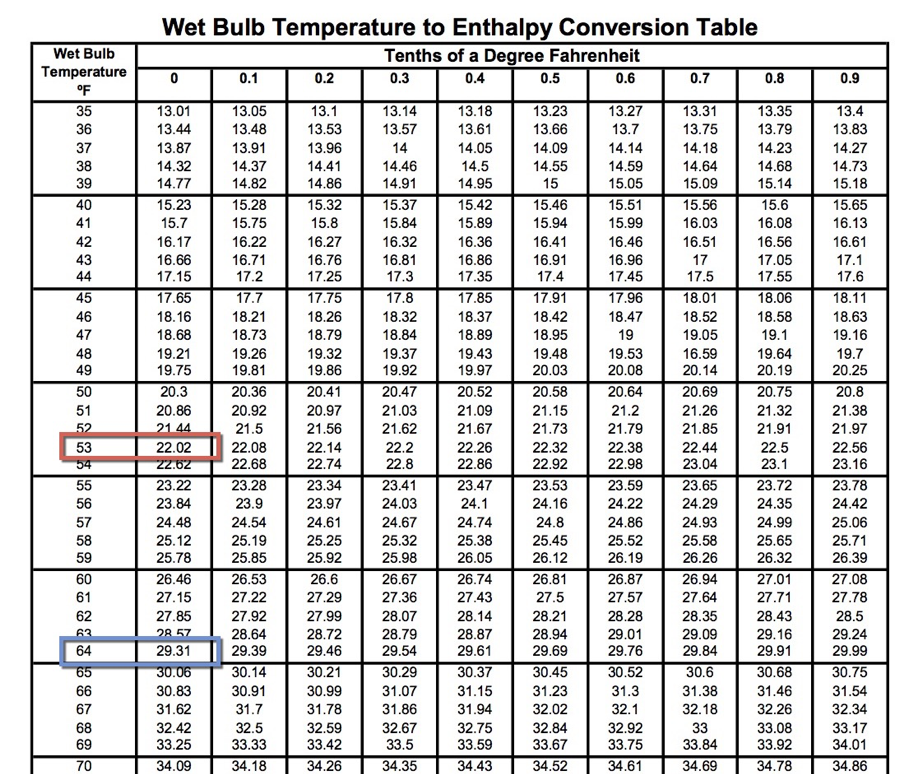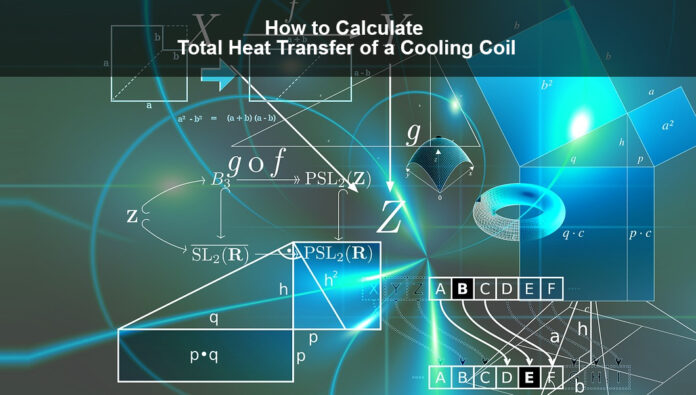This formula will show you how to calculate the total heat transfer from a cooling coil. The calculation for this is as follows;
BTUH(t) = CFM x 4.5 x [Et(h) – Lt(h)]
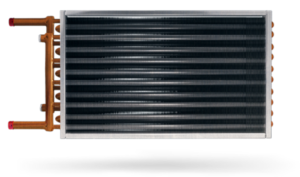
To calculate the Total BTUH you will need to know how much CFM is traveling over the coil, and what the entering and leaving total enthalpy.
BTUH(t) = Total BTU per Hour
Et(h) = Entering Total Heat (BTU/LB of Dry Air)
Lt(h) = Leaving Total Heat (BTU/LB of Dry Air)
What we need to do to come up with the values for our calculation, is to take some field measurements to come up with the CFM and the temperature of the entering and leaving conditions.
Entering Conditions


For our example we will assume that the field measurements determined that there is 2,000 CFM of air passing over the cooling coil at 76 DB (Dry Bulb) and 64WB (Wet Bulb).
Leaving Conditions
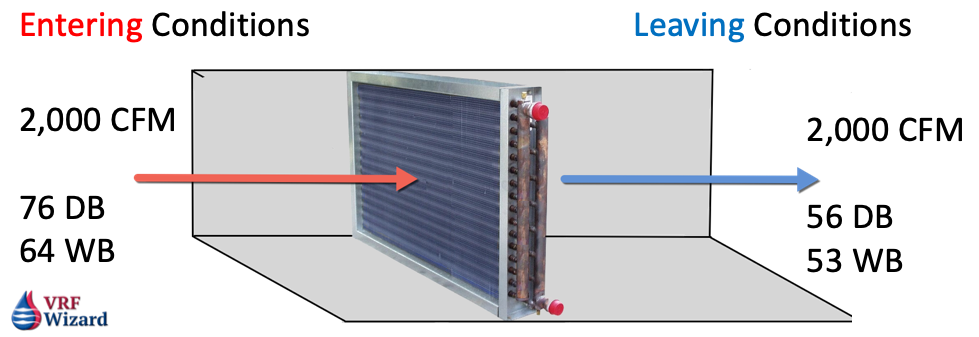

The next step is to measure the leaving air conditions. We measure that the same 2,000 CFM entering the coil is also leaving the cooling coil, but at a reduced temperature of 56 DB and 53 WB.



Psychrometric Chart
These conditions are easily plotted on a psychrometric chart. Horizontally along the bottom of the chart is where you will find the scale for dry bulb temperature. We have shown the entering condition with a vertical red line at the 76 degree dry bulb temperature line.
Then we draw a red line diagonally at the 64 degree wet bulb temperature line. The wet bulb temperature scale runs on a curve along the left side of the chart. As a side note, the point at where they intersect will indicate the relative humidity level and other info.
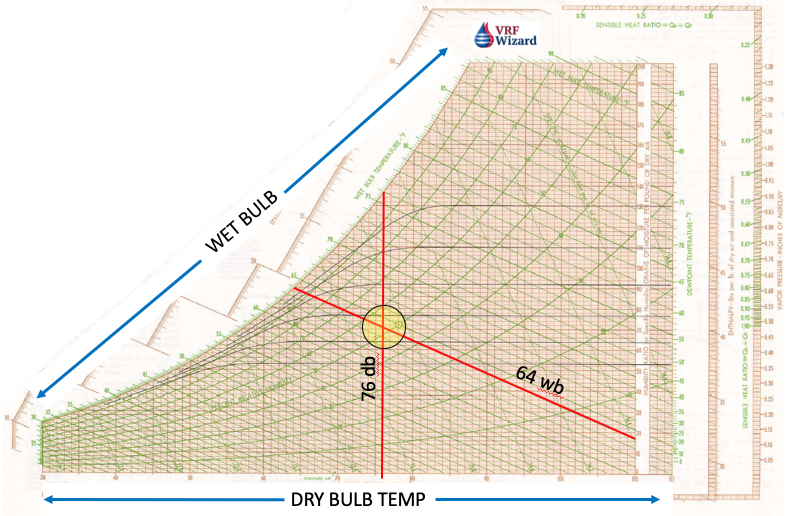

With the entering temperature plotted on the psychrometric chart as shown below, we can see that the wet bulb temperature line when extended further up and to the left, will hit the “Total Heat Enthalpy” scale. At that point you can read the value as 29.31 Btu/lb of dry air.
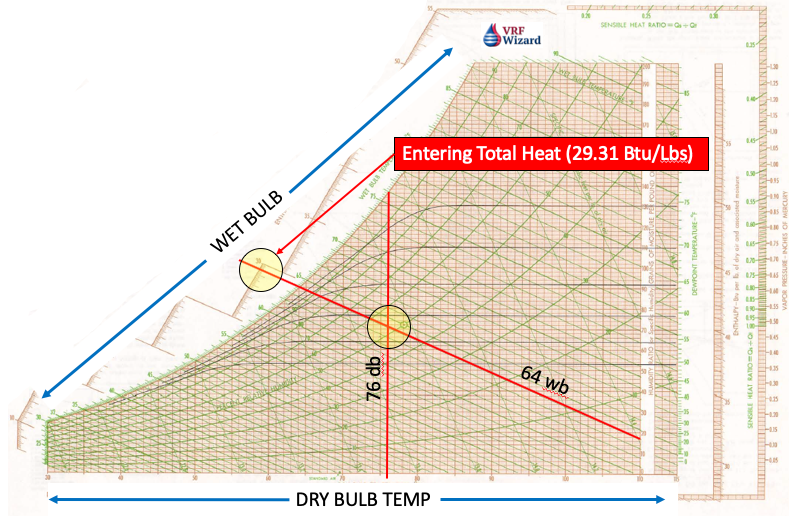

By doing the same thing for the leaving conditions we can derive at the “Total Heat Enthalpy” for the leaving air. As indicated below by the blue lines, this value equals 22.02 Btu/Lb.
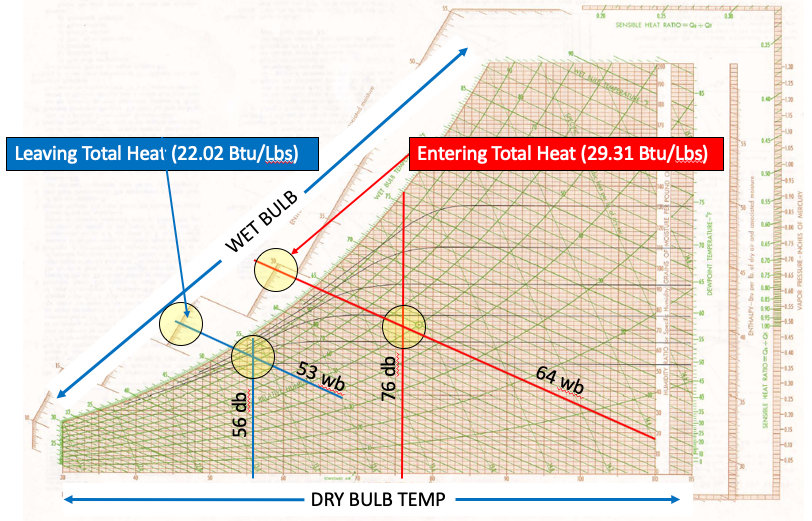

Now that you have plotted both the entering and leaving conditions on the psychrometric chart, you will be able to calculate the difference in Enthalpy between the two, which is required for our calculation.
Formula for Total Heat at Cooling Coil
Using our example, we can now plug into the total heat transfer equation the values we have determined from our measurements and from plotting those values on the psychrometric chart.
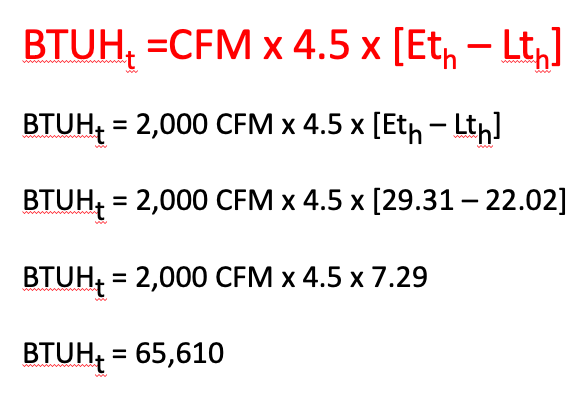

We have calculated the total heat transfer as 65,610 BTUH
Wet Bulb to Enthalpy Chart
To make life easier, there are charts that will give you the Enthalpy values based on the wet bulb temperature. As shown below, we have highlight the entering and leaving wet bulb temperatures and their corresponding Enthalpy values, the same values that were derived from plotting the wet bulb temperatures on the psychrometric chart.
